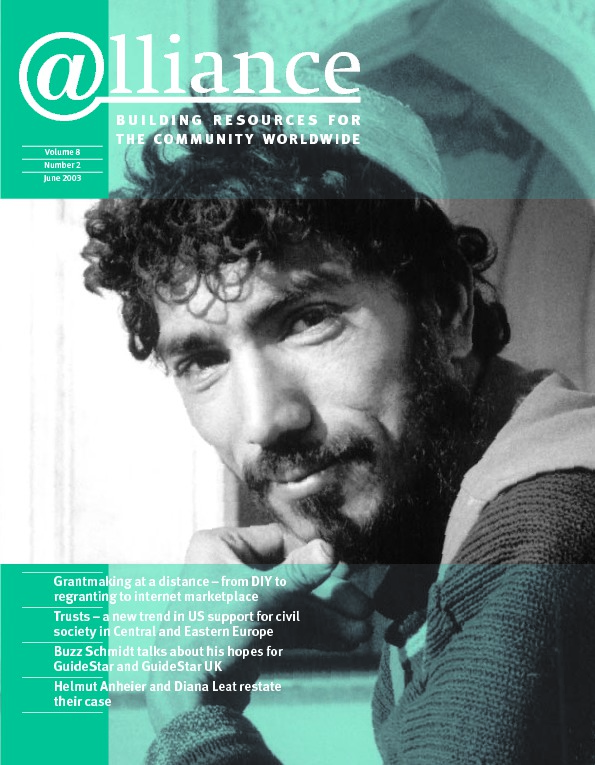Many international agencies ignore urban poverty, claiming that development is biased towards urban populations, yet a large and growing proportion of deprivation in Africa, Asia and Latin America is in urban areas. Urban areas have large concentrations of people with incomes too low to meet their needs who suffer deficiencies in provision for secure housing, water and sanitation, health care and schools.
The Millennium Development Goals (MDGs) will not be met unless there are successful urban programmes as well as successful rural programmes. And in urban areas, successful programmes depend largely on the quality and capacity of local government and civil society organizations.
This article outlines the scale of deprivation in urban areas and discusses the role of local organizations in meeting the MDGs in urban areas and how external agencies can support them.
The scale of deprivation
Since the mid-1970s, when the issue of urban bias was first discussed, the urban population in low- and middle-income nations has increased by 1.5 billion while the rural population has increased by 770 million. A large proportion of this much-expanded urban population lacks provision for basic services. UN estimates suggest that around 900 million urban dwellers live in ‘slums’ and shanty towns and most lack adequate provision for water and sanitation. A large and growing proportion of the world’s population that suffers from very high infant, child and maternal mortality rates, malnutrition, and AIDS, TB and other major diseases live in urban areas. In many low-income nations, infant and child mortality rates in urban areas are not much different from those in rural areas.
In most nations, more than a third of the urban population have incomes below the poverty line, even though the scale of urban poverty is usually understated, because poverty lines are based primarily on the cost of food. As such, they make inadequate allowance for the high non-food costs faced by most low-income urban households – for instance for rent, water, use of toilets, transport to and from work, health care and keeping children at school. Meeting the MDGs requires effective interventions in urban areas, too.
The role of local organizations
Many of the policies needed to meet the MDGs are at the macro level – for instance, changes to global trade regimes, reduced debt burdens and increased aid flows. But the effectiveness of such changes depends on whether these are accompanied by pro-poor changes at the micro-level in local organizations. Are there schools where low-income urban dwellers can afford to send their children; healthcare centres to which they can get access when ill or injured? Are their settlements connected to water, sanitation and drainage networks? Can low-income groups build their homes legally on safe sites and get a legal address (which is usually required to allow them to vote and to get their children into schools)? Local institutions determine whether poor people have access to politicians and civil servants; whether they are protected from violence and crime (including corruption) by a just rule of law; whether they can influence development projects. Local organizations also have important influences on whether other MDG targets are met – for instance, halting and reversing the spread of AIDS – and whether there are effective strategies to combat malnutrition and to work with youth.
This is not to imply that local governments should provide all services. But local governments have a major influence on how local markets operate, including those that have particular importance for low-income groups – for instance, for land for housing, for water and, in many instances, for building materials, credit, public transport and electricity. Local governments can also create or exacerbate poverty. They often harass street vendors and other informal enterprises that provide livelihoods for many low-income groups. Every year, millions of low-income urban dwellers are forcibly evicted by ‘development’ or ‘city beautification’ programmes, leaving them homeless and entrenching patterns of poverty, discrimination and social exclusion.
Thus, there are two critical questions: how can local organizations be made more effective and more pro-poor or less anti-poor? And how can higher levels of government and international agencies support this? Perhaps most of important of all, what role is permitted to the organizations formed by the urban poor themselves in meeting the MDGs?
The urban poor’s own organizations
Low-income households and their organizations have central roles in building and managing most urban centres. They are responsible for the construction of most new housing and most new settlements – even if these are deemed ‘illegal’ by official regulations. If official service providers are unable or unwilling to serve their settlements, then informal or community enterprises do so. A growing number of governments and international agencies have recognized that supporting urban poor organizations is more cost-effective than conventional responses.
There is another way to plan, implement and manage urban development: with local governments listening to and working with urban poor households and their organizations. There have been successful examples of this for more than three decades but they have become more common and larger in scale in the last 15 years. In part, this is because far more urban authorities have elected councillors and mayors. But perhaps as importantly, representative organizations of the urban poor that want to work with urban governments in addressing their members’ needs have become more widespread:
- In India, the National Slum Dwellers Federation and Mahila Milan (savings groups formed by women slum and pavement dwellers) have over 700,000 members, and they are working in many cities and smaller urban centres on upgrading and new housing projects involving tens of thousands of households, and on community-managed toilet blocks involving millions.
- In Thailand, urban poor community organizations and their networks are engaged in many projects with local governments and supported by a national agency, the Community Organizations Development Institute. Their target is to significantly improve the lives of 300,000 urban poor households between 2004 and 2008.
- In Cambodia, the Solidarity for the Urban Poor federation is working in 200 slums with community-based savings and credit schemes, and with the government in an ambitious programme to upgrade hundreds of slums and develop alternatives to evictions.
Urban poor federations also have large programmes in many other nations including South Africa, Namibia, the Philippines, Kenya and Zimbabwe.
How can external agencies support local processes?
But there is a huge physical, conceptual and institutional distance between those facing serious deprivation and aid agencies’ decision-making processes and management. And national governments usually object to any significant external support to local governments or civil society unless they can direct it.
This can be resolved by channelling funding through intermediary institutions located in recipient countries that can work in partnership with low-income groups and their organizations. These intermediary institutions can ensure that accountability and transparency go down to poorer groups as well as up to their funders. Some donors recognize this – for instance, the official Swedish bilateral agency Sida supports improved housing and provision for basic services in various Central American nations but channels its support through institutions set up within each nation. Given the number of people reached in many different locations, the external funding is not large. However, it is unusual in its long-term support for local institutions, and its insistence on recovering funds for re-use where possible.
Another example is the Community-Led Infrastructure Finance Facility (CLIFF), through which British and Swedish bilateral aid funds a great range of community-driven development in India. The external support goes through a fund set up by the Indian National Slum Dwellers Federation, Mahila Milan and their support NGO SPARC. Many urban poor federations have set up their own financial institution to manage members’ savings, through which external funding can be channelled.
The umbrella organization set up by the urban poor federations, Slum/Shack Dwellers International (SDI), provides another mechanism through which external funding can support local processes. MISEREOR, CORDAID, SELAVIP and Homeless International are important funders of these processes. The Sigrid Rausing Trust and the UK-based Big Lottery Fund have provided funds to SDI to help federation groups acquire land (or tenure of land already occupied) and this supports a great range of federation initiatives for upgrading and new house development and helps develop urban poor organizations in other nations.
David Satterthwaite is Senior Fellow, Human Settlements Programme, International Institute for Environment and Development (IIED). He can be contacted at David.Satterthwaite@iied.org
This article draws heavily on papers published in the April 2005 issue of Environment and Urbanization, which was on meeting the MDGs in urban areas – especially the papers by Sundar Burra, Somsook Boonyabancha, Alfredo Stein with Luis Castillo and Jean du Plessis.






Comments (0)